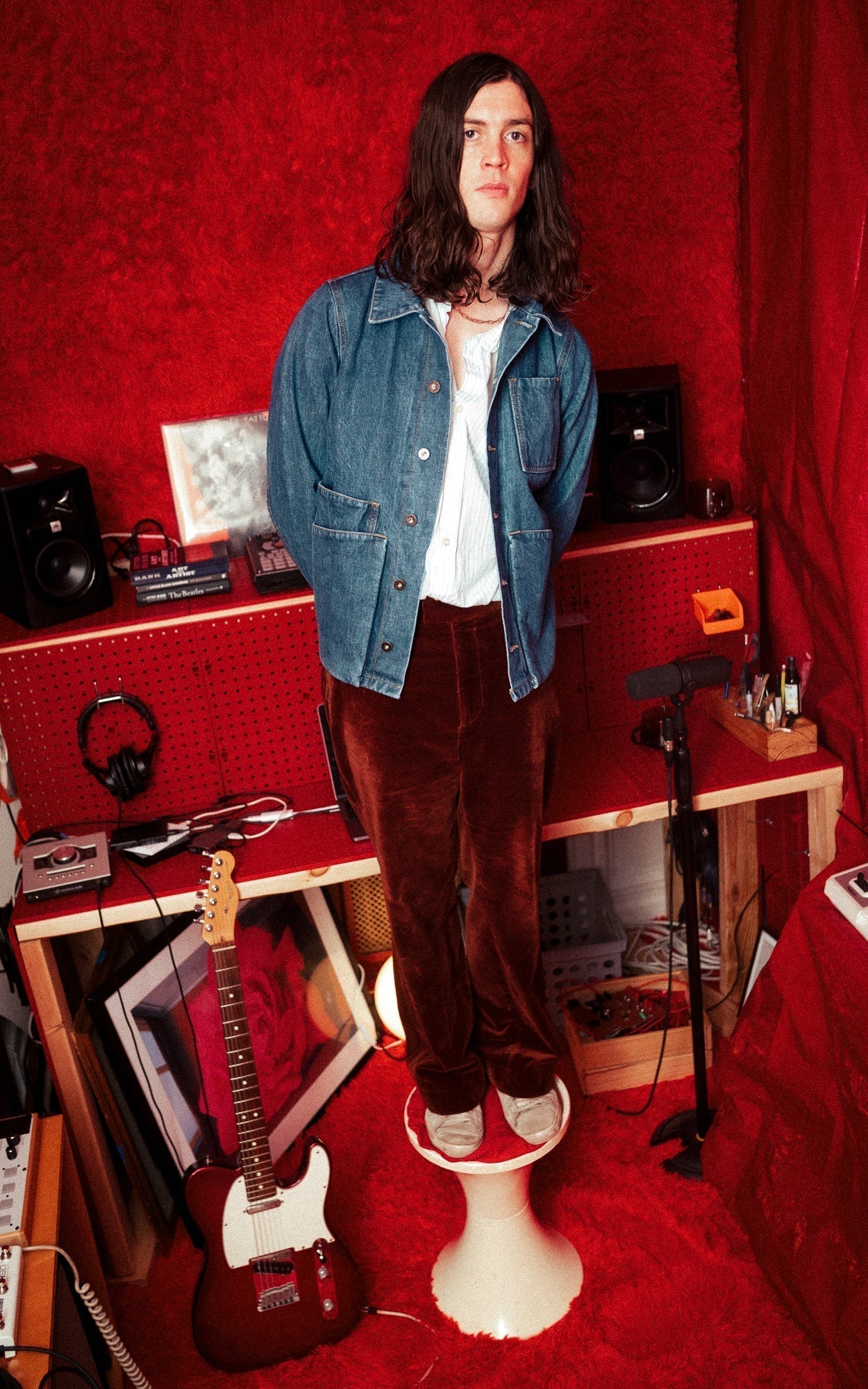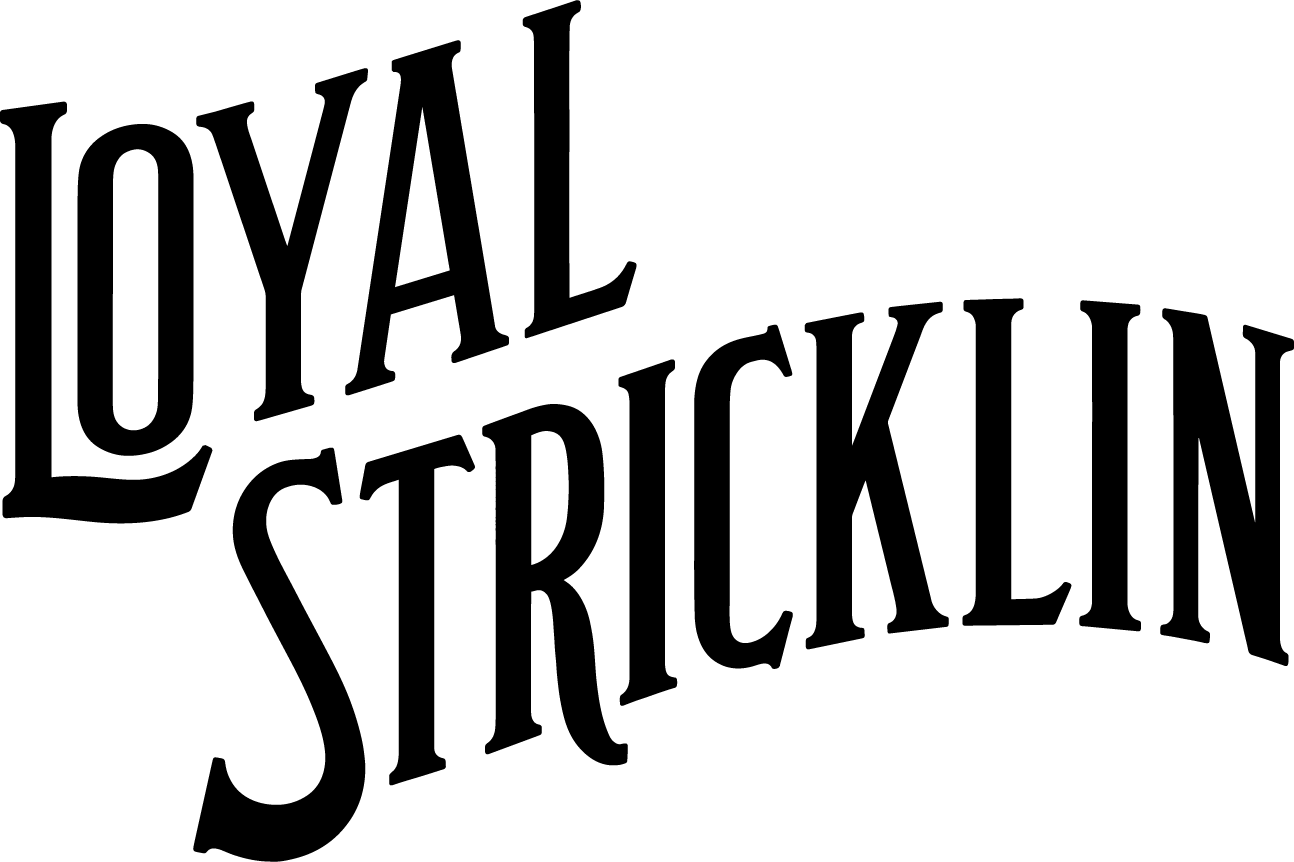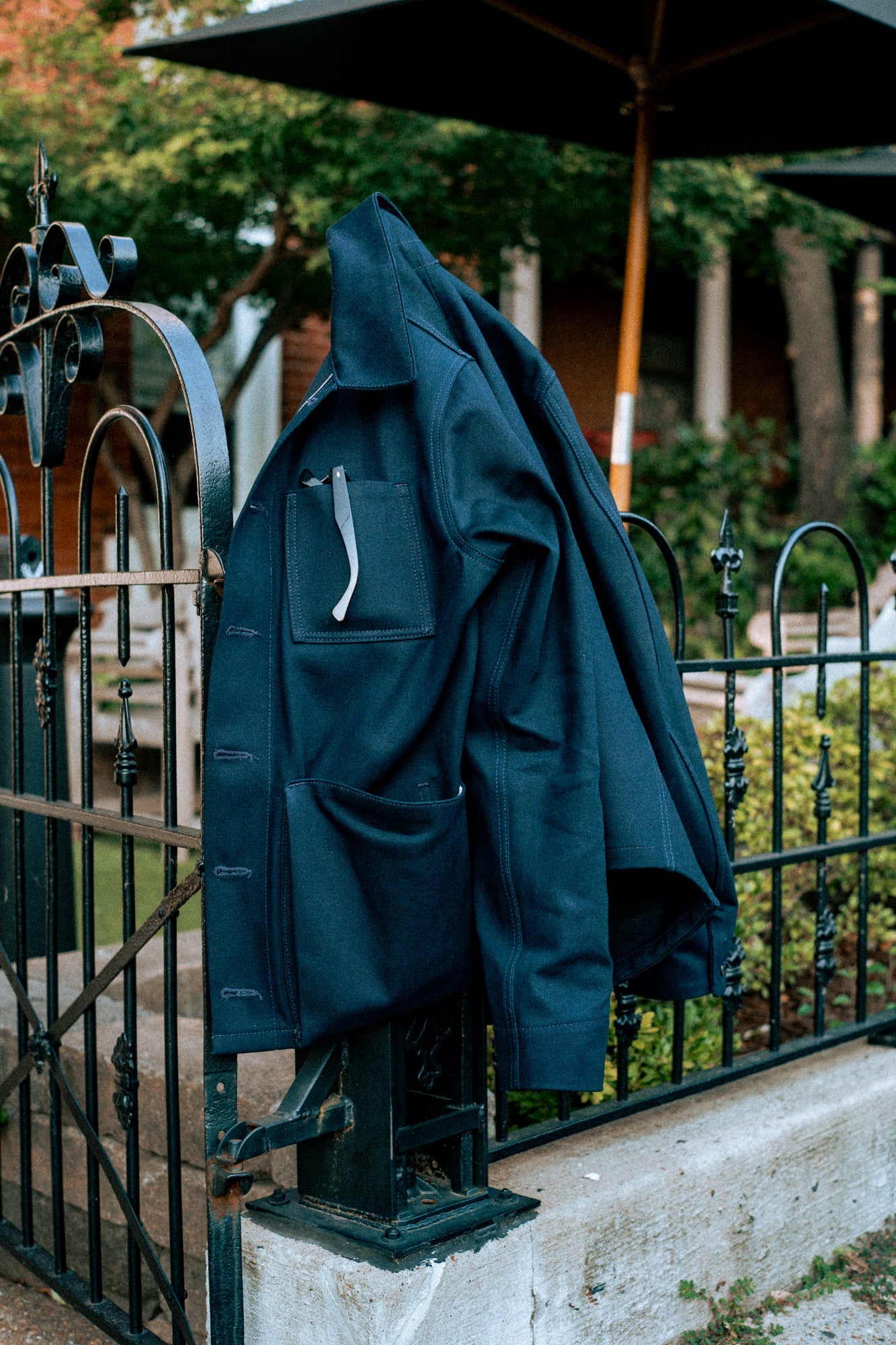Article: Interview with Loyal Stricklin Alum, Zach Kennedy of Industry Monk

Interview with Loyal Stricklin Alum, Zach Kennedy of Industry Monk

MONK listening party
Saturday, October 11, 2025 2pm
at Silence Please
132 Bowery, New York NY
RSVP
Purchase an Amos Chore Coat in 15oz Stonewashed Selvedge
Zach has been a longtime friend of both the brand and me personally, having worked in our studio for over six years until the spring of 2025. He spent nearly half that time creating his new album, and I had the privilege of hearing just about every iteration of each song in real time. To say I’m proud of my friend would be an understatement—MONK is a stunning blend of R&B, rock, and acoustic elements, full of character and soul with ethereal, layered vocals and catchy hooks.
This past July, I visited Zach at his home studio in Brooklyn, NY, to capture him in his element wearing our Stonewashed Amos Chore Coat, and to talk with him about not only his new album but also how he sees the intersection of his sound and personal style.
Visit his site here: IndustryMonk.com
All Photos by Michael Stricklin of Studio Stricklin and Loyal Stricklin.
Interview below:

How would you describe the relationship between your sound and your personal style?
They both exist in a certain state of flux - I never stay put in a single style or genre for long. I've tried to be a uniform dresser-- I’ll get obsessed with a particular look and really start to think I've found my final form. Two months later, I'm itching to try something new. I’m often just as restless with music, so I’ve started a new rule that I can’t produce a song until it’s finished, that way when the time comes to dress up a new record, there’s a blank slate to work with. It’s all driven by some combination of perfectionism and curiosity.
Do you think fashion can communicate what words or sound can’t?
Both music and fashion feel like two powerful sides of the same coin when words are falling short. Fashion is largely a cultural signifier, and there is an immediacy in outwardly telling people which tribe you belong to by choosing to wear one pair of pants over the next on any given day. And while there is so much culture baked into our musical decisions too, for me, sound has always been a spiritual communicator at its core.


Are there specific designers, aesthetics, or subcultures that have shaped your visual identity?
Working at Loyal Stricklin as a sewer for six years, I developed a strong appreciation for what it means to make high-quality clothing well (and why things cost what they cost). Brands/designers I’m currently obsessed with are: Husbands, Sefr, and Ben Cobb, the latter of which did a run of suits at Tiger of Sweden that I ended up purchasing for my wedding last year. All of these guys are heavily referencing classic 70s silhouettes, which I consistently return to (in both my fashion and music).
How do you balance authenticity in style with the pressure to present a curated image?
I genuinely find fashion to be one of the most enjoyable aspects of being a new artist-- I'm wearing what feels honest and giving myself the chance to curate and evolve as I go. So the dance is less about the pressure to keep up an image, and more about the discipline to keep my clothing choices defined, and to only buy high-quality pieces that can stay with me through any phase.

How does this project differ from your previous work?
My debut project had more cooks in the kitchen, and in some ways it was the perfect first recording experience. I liken it to graduate school, because I was being introduced to all kinds of references and approaches that I hadn’t encountered yet. My new album, MONK, on the other hand, was very isolated. I still had collaborators, but I ultimately gave myself permission to call all of the shots. The result is more intimate, raw, and cohesive as a result.
Was there a particular song that set the tone or direction for the rest of the album?
Stayed was the one that shifted everything. I had asked my friend Madeline to come sing on it, and at that point it was just acoustic guitar. She absolutely crushed her part in about half an hour, and after she left I remember toying with the arrangement and a lot of the characteristics of the album were born from that session. After that song, I revisited previous tracks I thought were done and either started them over to match the energy of Stayed or threw them away entirely.

.
.


How did your creative process evolve during the making of the album?
When the idea to record MONK first entered my mind, I had set out to make a heavier rock album. Shortly after I started recording, however, it became apparent that my emotional state was asking for something more delicate, raw, and cinematic. As a result, I had a return to form and ended up being more inspired by the Mount Rushmore of artists that I always keep around - Davie Bowie, Pink Floyd, Frank Ocean, and a lot of movie soundtracks.
Can you talk about any collaborations or producers who helped shape the sound?
Huge shout out to Mr. Loyal Stricklin himself for playing the guitar intro on Dance With All Our Pain. Michael was generous enough to send me a couple of different ideas in the very nascent stages of the album process, and I remember being really inspired by the chord progressions he was sending over.
All in all MONK was a largely solo effort, and I spent countless hours perfecting the arrangements. When needed, I cashed in some favors with talented folks on bass, drums, pedal steel, and cello. Towards the end as the album was wrapping, I knew I needed a second pair of ears and I took it to my friend Bryce Cain to mix it across the finish line.

What was the biggest challenge you faced while making the album?
Mixing, hands down. When you go that long with the same songs in your ear it gets difficult to know if you’ve got anything good on your hands, so I was happy to pass it off to someone I trusted, like Bryce. That was ultimately the biggest challenge — knowing when to push through my own creative frustrations, and knowing when to ask for help.
What emotions or ideas did you want listeners to take away from it?
People say imitation is the highest form of flattery, but I think it’s crying. Fire up the engine for a night time drive and hit play on MONK. I want your tears.




Leave a comment
This site is protected by hCaptcha and the hCaptcha Privacy Policy and Terms of Service apply.